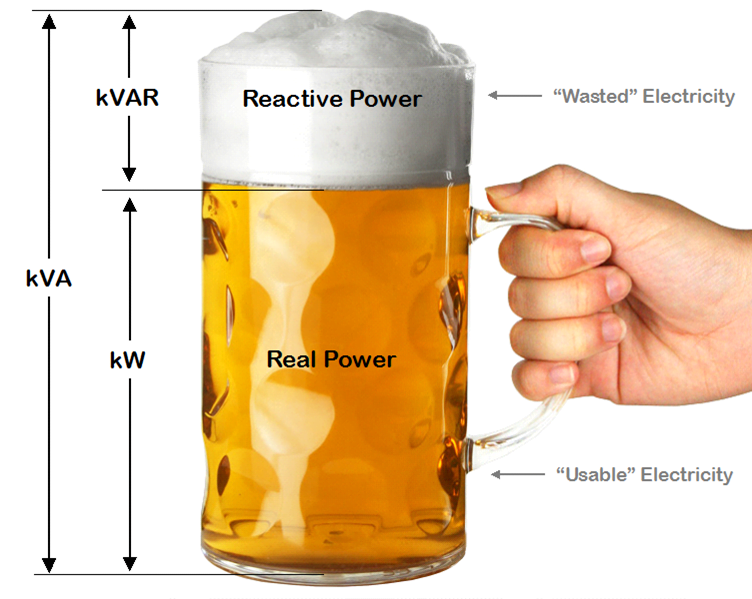
This details provides guidance to the consumers of electric energy who take supply at low and medium voltages for improvement of power factor of the installation in their premises.
The various advantages of maintaining a high power factor of a system reflect on the national economy of a country the available resource are utilised to its fullest possible extent. More useful power is available for transmission & utilisation without any extra cost. Also the life of individual apparatus is considerably increased and energy losses reduced.
Conditions of supply of electricity board stipulate the lower limit of power factor which generally 0.85 and consumer is obliged to improve and maintain the power factor of his installation to confirm to this conditions.
When the tariffs of electricity boards based on KVA demand or KW demand with suitable penalty/ rebate for low/ high power factor improvement in the power factor would effect savings in the energy bills.
power factor is dependent largely on consumers apparatus and partly on system components have fixed parameters of inductance, capacitance & resistance. The choice of these components to bring up the power factor depends on economics.
In case of A.C. Supply, the total current taken by almost every item of electrical equipment except that of incandescent lighting and most forms of resistance heating, is made up of two parts, namely :
a. The in-phase component of the current (active or useful current) which is utilised during work or producing heat.
And,
b. The quadrature components of the current (also called idle or reactive current) and used for creating magnetic field in the machinery or apparatus. This component is not convertible into useful output.
What is power factor???
In AC circuits, the power factor is the ratio of the real power that is used to do work and the apparent power that is supplied to the circuit.
The power factor can get values in the range from 0 to 1.
The power factor is equal to the real or true power P in watts (W) divided by the apparent power |S| in volt-ampere (VA):
PF = P(W)/ |S(VA)|
PF – power factor.
P – real power in watts (W).
|S| – apparent power – the magnitude of the complex power in volt⋅amps (VA).
The power factor indicates the portion of the current in the system performing useful work. A power factor of Unity (100%) denotes of 100 % utilisation of the total current for useful work where’s a power factor of 0.70 shows that only 70% of the current is performing useful work.

Principle causes of low power factor:
The following electrical equipment & apparatus have low power factor:
- Induction motors of all types particularly when they are under load.
- Power transformers and voltage regulators
- Arc welders.
- Induction furnace & heating coils.
- Choke coils and magnetic systems.
- Fluorescent and discharge lamps, neon signs, etc.
Effect of power factor to consumer:
The disadvantages of low power factor are-
- overloading of cables and transformers.
- decreased line voltage at point of application.
- inefficient operation of plant, And
- panel power rates.
The advantages of high power factor are-
- reduction in current.
- reduction in power cost.
- reduced losses in the transformers and cables.
- lower loading of transformers, switchgears cables etc.
- increased capability of the power system.
- improvement in voltage conditions & apparatus performance due to elimination of inductive current.
- reduction in voltage dips caused by welding and similar equipment.
